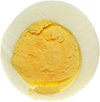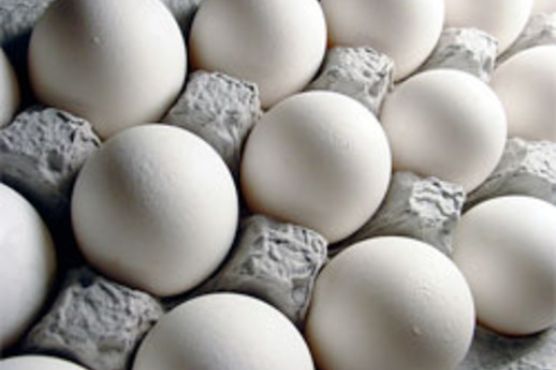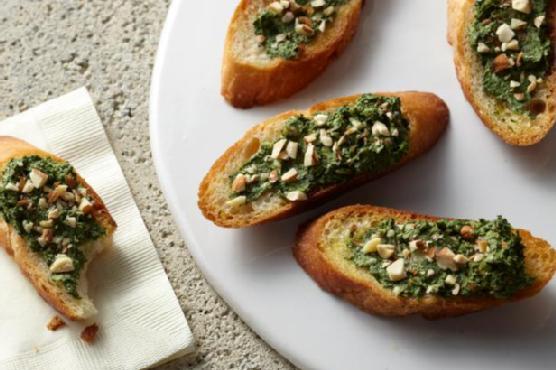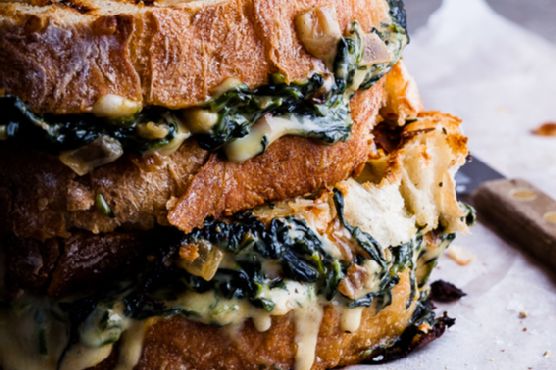Eating for Two: Julia Child's Cooked Egg Mayonnaise
Need a dairy free and lacto ovo vegetarian side dish? Eating for Two: Julia Child's Cooked Egg Mayonnaise could be an awesome recipe to try. This recipe makes 8 servings with 62 calories, 3g of protein, and 5g of fat each. For 47 cents per serving, this recipe covers 2% of your daily requirements of vitamins and minerals. 17 people were glad they tried this recipe. A mixture of hard-boiled egg, wine vinegar, olive oil, and a handful of other ingredients are all it takes to make this recipe so yummy. From preparation to the plate, this recipe takes roughly 45 minutes. It is perfect for valentin day. It is brought to you by Serious Eats. All things considered, we decided this recipe deserves a spoonacular score of 12%. This score is rather bad. Users who liked this recipe also liked Julia Child's Vichyssoise, Julia Child's Ratatouille, and Julia Child's Beef Bourguignon.
Servings: 8
Ingredients:
1 tablespoon Dijon mustard
1 large egg
2 tablespoons flour
2 hard-boiled egg yolks
2 1/2 teaspoons fresh lemon juice
1 cup excellent olive oil or other fresh vegetable oil (I use 1/2 olive and 1/2 vegetable)
Several grinds of pepper, preferably white
1/2 teaspoon salt
More seasonings as needed: salt, vinegar, lemon juice, etc.
1/2 cup water
2 1/2 teaspoons wine vinegar
Equipment:
sauce pan
whisk
stove
frying pan
food processor
bowl
Cooking instruction summary:
Procedures 1 Measure the flour into a 2-quart stainless-steel saucepan and, whisking constantly, gradually blend in the water to make a lump-free mixture. Whisking slowly and reaching all over the bottom of the pan, bring to a boil on top of the stove. Boil slowly 1/2 minute, whisking—beat in droplets more water if the sauce is stiff rather than very thick. Remove from heat, break the egg into the center of the sauce, and rapidly whisk it in. Put the sauce over moderate heat again and, whisking slowly, boil for 15 seconds. Scrape the sauce into the bowl of a food processor. 2 Add the hard-boiled yolks, mustard, salt, vinegar, and lemon juice to the machine. Process 15 seconds—long enough to be sure the yolks are well incorporated, so that they will create the emulsion. Then, with the machine running, begin adding the oil in droplets. When the emulsion is established (which should happen after about 1/3 cup oil has gone in), add the oil in a thin stream of droplets. When as much oil as you wish has gone in and the sauce is thick and glossy, taste analytically for seasoning, adding salt, pepper, etc. as you feel them needed. 3 Store the sauce in a covered container in the refrigerator; it will keep for at least a week. 4 Note: My mayonnaise broke almost immediately, when I tried to correct the seasoning. I ate it runny and then re-emulsified it the next day: Whisk up the broken sauce. Whisk a spoonful of it into a spoonful of mustard or of crushed hard-boiled egg yolk. When the spoonful of mayonnaise and mustard or yolk are smoothly combined, start whisking in the broken sauce bit by bit. Eventually it will turn thick and glossy and beautiful as ever. But, I discovered, it will still weep some oil and get a little grainy as it rests. (Harold McGee tells us that throughout time and around the world, versions of mayonnaise have been made with béchamel sauce, hard-boiled egg yolks, cooked potato, garlic, bread, and fresh cheese, but that “None of these ingredients is as effective at emulsifying and stabilizing as a raw egg yolk, so they will emulsify less oil and the sauces will tend to leak some free oil.”) If this happens—leaky oil and slight graininess, as opposed to a completely liquefied sauce—just whisk the mayonnaise before eating, and it should firm up nicely enough.
Step by step:
1. Measure the flour into a 2-quart stainless-steel saucepan and, whisking constantly, gradually blend in the water to make a lump-free mixture.
2. Whisking slowly and reaching all over the bottom of the pan, bring to a boil on top of the stove. Boil slowly 1/2 minute, whisking—beat in droplets more water if the sauce is stiff rather than very thick.
3. Remove from heat, break the egg into the center of the sauce, and rapidly whisk it in.
4. Put the sauce over moderate heat again and, whisking slowly, boil for 15 seconds. Scrape the sauce into the bowl of a food processor.
5. Add the hard-boiled yolks, mustard, salt, vinegar, and lemon juice to the machine. Process 15 seconds—long enough to be sure the yolks are well incorporated, so that they will create the emulsion. Then, with the machine running, begin adding the oil in droplets. When the emulsion is established (which should happen after about 1/3 cup oil has gone in), add the oil in a thin stream of droplets. When as much oil as you wish has gone in and the sauce is thick and glossy, taste analytically for seasoning, adding salt, pepper, etc. as you feel them needed.
6. Store the sauce in a covered container in the refrigerator; it will keep for at least a week.
Note My mayonnaise broke almost immediately, when I tried to correct the seasoning. I ate it runny and then re-emulsified it the next day
1. Whisk up the broken sauce.
2. Whisk a spoonful of it into a spoonful of mustard or of crushed hard-boiled egg yolk. When the spoonful of mayonnaise and mustard or yolk are smoothly combined, start whisking in the broken sauce bit by bit. Eventually it will turn thick and glossy and beautiful as ever. But, I discovered, it will still weep some oil and get a little grainy as it rests. (Harold McGee tells us that throughout time and around the world, versions of mayonnaise have been made with béchamel sauce, hard-boiled egg yolks, cooked potato, garlic, bread, and fresh cheese, but that “None of these ingredients is as effective at emulsifying and stabilizing as a raw egg yolk, so they will emulsify less oil and the sauces will tend to leak some free oil.”) If this happens—leaky oil and slight graininess, as opposed to a completely liquefied sauce—just whisk the mayonnaise before eating, and it should firm up nicely enough.
Nutrition Information:
covered percent of daily need















